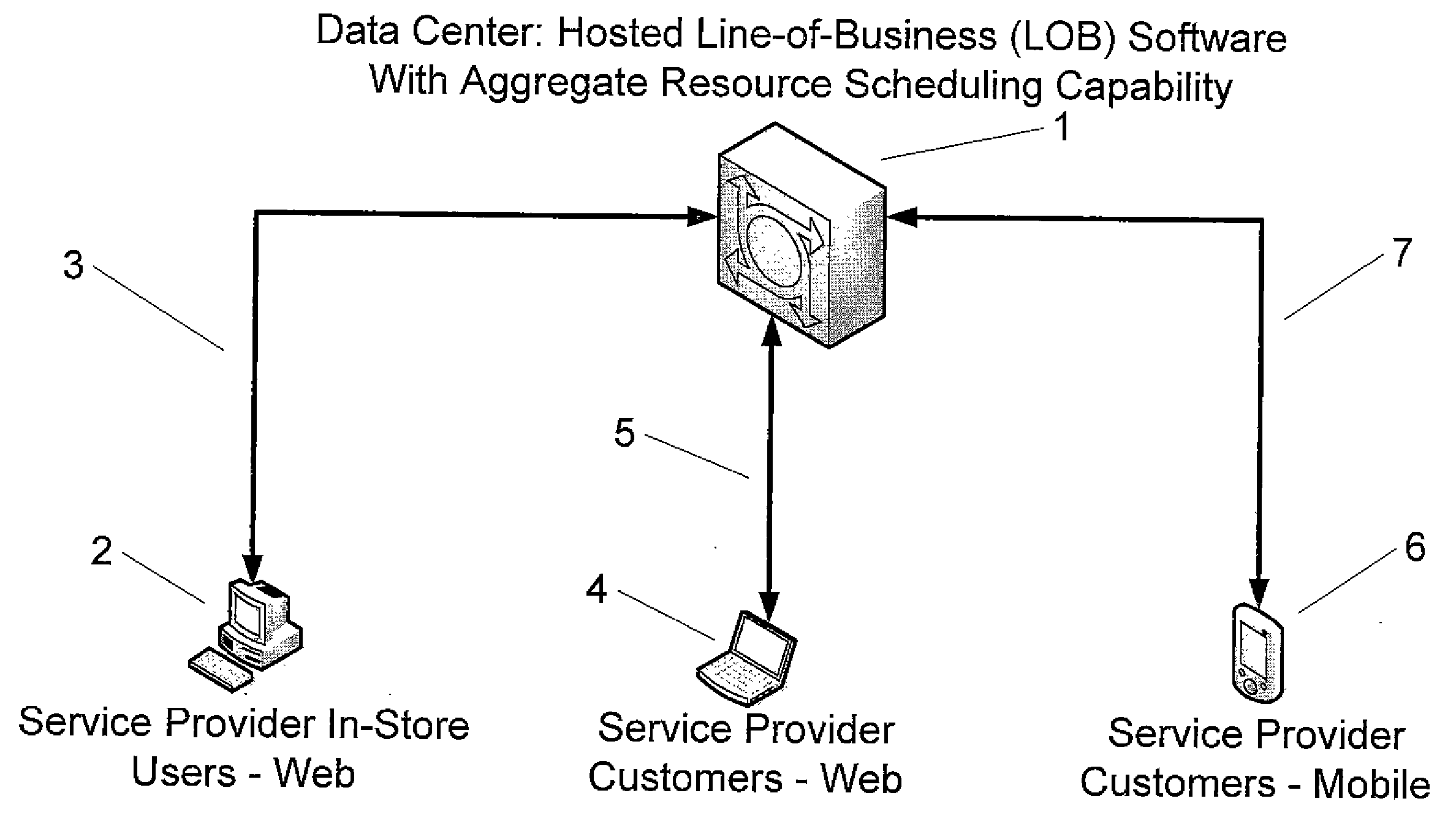Tracking which human resources are available to provide which services; knowing which physical resources are currently in use; notifying staff of upcoming appointments; quickly answering customer inquiries about resource availability: these tasks are a common challenge to all service-oriented businesses, and a major portion of each work day is spent monitoring resource schedules and responding to customer requests for appointments.
In sole proprietor shops, these activities have a direct
impact on the bottom line as time spent booking appointments is time lost delivering services—and earning revenue.
While these innovations are indeed valuable and widely used, the problem remains that one or more employees must still monitor and update this ‘electronic planner,’ referring to it each time a customer calls for an appointment and updating it often to reflect new and cancelled appointments.
The execution of this vision, however, has been problematic.
First, there is the issue of a service provider letting its customers know that they have the option of scheduling appointments without calling or walking into the shop.
A service provider telling its customers to visit a web URL to schedule upcoming appointments is easily lost in the cacophony of advertising and media reports of the hottest, latest web destinations.
Unfortunately, the technical implementation of an aggregate resource scheduling
software system is not without its difficulties.
These systems face the complex problem of
synchronizing data that is updated centrally with that updated locally by the service providers in their separate, standalone resource scheduling applications.
Aggregate resource scheduling
software systems that use ‘decisioning’ to deal with double-booking—ie., they set all new appointments to a status of ‘pending’ until the appointment is accepted or rejected by someone who has access to the service provider's authoritative schedule—are simple to implement technically, but lack the immediate feedback desired by customers and do little to lessen the manual
workload of maintaining an ‘electronic planner’ in the service provider's shop.
While this model certainly solves the technical problems of data
concurrency and synchronization, it is problematic because it forces service providers to abandon whatever resource scheduling
software they may have been using formerly as a condition of joining the aggregate resource scheduling
community.
The end result is either lower participation in the scheduling
community—diminishing its effectiveness for customers seeking to schedule appointments for services and resources made available by service providers—or reduced efficiency for the service provider who must either give up the functionality of a tightly-integrated scheduling solution for one that is removed from the line-of-business application used to run the
business day-to-day or resort to double-entry of schedule information in the two disparate systems.
A final issue with aggregate resource scheduling systems that provide customer access to a plurality of service provider calendars is that they have historically assumed that the main customer method for interaction with the system will be the
web browser.
Consequently, as new
consumer technologies become available (such as smart phones that are capable of running software applications), these
HTML-based systems cannot be modified quickly for delivery of scheduling information to the new electronic scheduling interfaces.
This spawning of non-integrated, disparate systems forces the service provider to track scheduling information in several different applications, actually creating additional work and compounding the very problems resource scheduling software applications were intended to solve.
 Login to View More
Login to View More  Login to View More
Login to View More 


